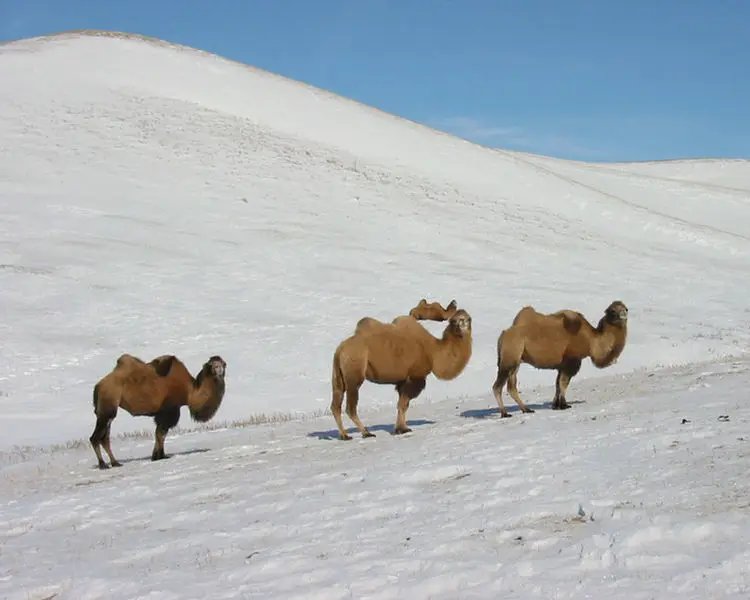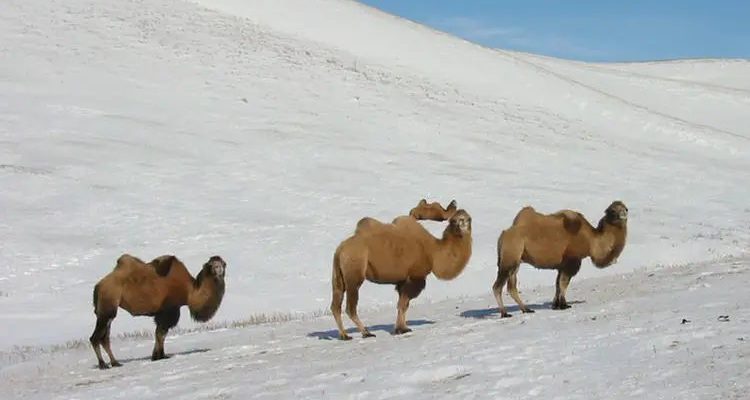
Bactrian camels are unique creatures, adapted to thrive in harsh environments where resources can be sparse. Just like an old reliable friend, they can surprise you with their resilience and strength. But if you ever find yourself face-to-face with one of these extraordinary animals, it’s essential to know how to approach the situation safely and respectfully. Think of it like navigating a new friendship—you want to be respectful and considerate while also being aware of boundaries.
In this guide, we’ll explore what makes the Bactrian camel special, how to interact safely if you encounter one in the wild, and some other interesting facts that make these animals truly remarkable.
Why Are Bactrian Camels Unique?
Bactrian camels, known scientifically as *Camelus bactrianus*, are fascinating creatures for many reasons. First and foremost, they have two humps, which set them apart from their one-humped Arabian cousins. These humps aren’t just a quirky feature; they store fat, which the camel can convert into energy when food and water are scarce. It’s like carrying a built-in snack for long journeys!
These camels are well-adapted to harsh environments, particularly in Mongolia and China. They can tolerate extreme temperatures, going from scorching heat to freezing cold. Imagine wearing layers of thick fur while trekking through a snowstorm! Their unique physiology allows them to conserve water and withstand droughts, making them essential for survival in desert regions.
Another interesting aspect is their social behavior. Bactrian camels often travel in herds, led by a dominant male. This hierarchy helps them stay safe in the wild. When it comes to spotting one, you might see them grazing in groups, communicating with each other through various vocalizations and body language. Isn’t that a cool way of connecting with each other?
What Should You Do If You Spot a Bactrian Camel?
If you find yourself lucky enough to spot a Bactrian camel in the wild, the first thing to remember is to stay calm. Think of it like meeting a celebrity; you wouldn’t want to scare them off with a sudden movement! Maintaining a safe distance is crucial. These animals can be unpredictable if they feel threatened.
Here are a few tips for your encounter:
- Observe From Afar: Use binoculars or a camera with a zoom lens to get a good look without getting too close.
- Stay Quiet: Loud noises can startle them. Just enjoy the moment in peaceful silence.
- Avoid Feeding: While it might be tempting to share your snacks, feeding wild animals can disrupt their natural behaviors.
Approaching a wild animal can be nerve-wracking, but the key is to respect their space. You might be wondering, “What if they seem friendly?” Even the most docile-looking camel can become defensive if it feels cornered, so err on the side of caution.
How to Safely Interact with Bactrian Camels
If you find yourself in a situation where you need to interact with Bactrian camels, perhaps in a conservation area or sanctuary, it’s crucial to follow some basic guidelines. Just like with any new friend, building a relationship takes time and trust.
First off, always listen to the advice of guides or caretakers. They know the animals and the best practices for interaction. If they say to keep a distance, it’s for a good reason.
Here’s how to approach the interaction:
- Follow Guidelines: Pay attention to any signs or instructions given by park rangers or guides.
- Let Them Come to You: If they seem curious, allow them to approach you first. It’s much like allowing someone to break the ice!
- Remain Calm: Your body language can send signals to the camel. Stay relaxed, and avoid sudden movements.
Remember, these animals are wild, and while they can be gentle, they are still unpredictable. If you feel any tension in the atmosphere, back away slowly.
What Are Some Common Misconceptions About Bactrian Camels?
You might have heard some myths about Bactrian camels that aren’t entirely true. One common misconception is that they only survive in the desert. While they are desert animals, Bactrian camels also thrive in rocky terrain and cold environments. Their thick fur helps protect them from both hot and frigid temperatures.
Another myth is that all camels store water in their humps. In reality, their humps store fat, which they can convert into water when metabolized. Isn’t that fascinating? The body of a Bactrian camel is an incredible example of adaptation and survival.
Lastly, some people believe that Bactrian camels are aggressive. While they can be protective of their young and territory, most of the time, they are calm and even friendly, especially in a controlled environment like a sanctuary. Misunderstanding their behavior can lead to unnecessary fear.
What Are the Ecological Importance of Bactrian Camels?
Bactrian camels play a crucial role in their ecosystems. They help maintain the health of their habitats by grazing on vegetation, which can promote plant diversity. Their movement through harsh terrains can also aid in seed dispersal, contributing to the growth of various plant species.
Moreover, these camels are part of the cultural and economic fabric of the regions they inhabit. Local communities depend on them for transportation, milk, meat, and wool. They are invaluable assets, showcasing the connection between wildlife and human communities.
By protecting Bactrian camels and their habitats, we help ensure the survival of not just the species but also the delicate balance of ecosystems they are part of. It’s a win-win situation!
Encountering a Bactrian camel in the wild can be a thrilling and educational experience. By knowing how to observe them respectfully and understanding their unique traits, you can appreciate these magnificent animals without disturbing their natural behaviors.
Always prioritize safety and respect the boundaries of wildlife. The next time you find yourself in their presence, remember that these camels are not just creatures to be marveled at; they’re vital players in their ecosystems and communities. So, embrace the moment, and enjoy the connection between humans and these incredible animals!

